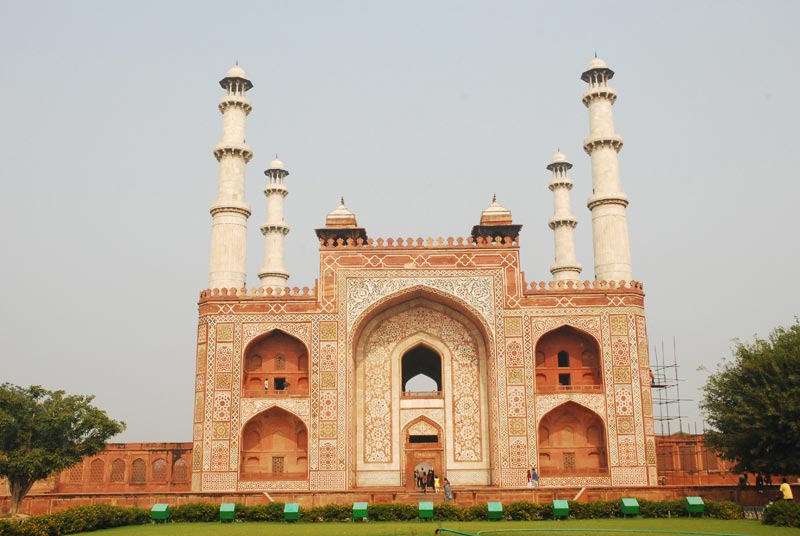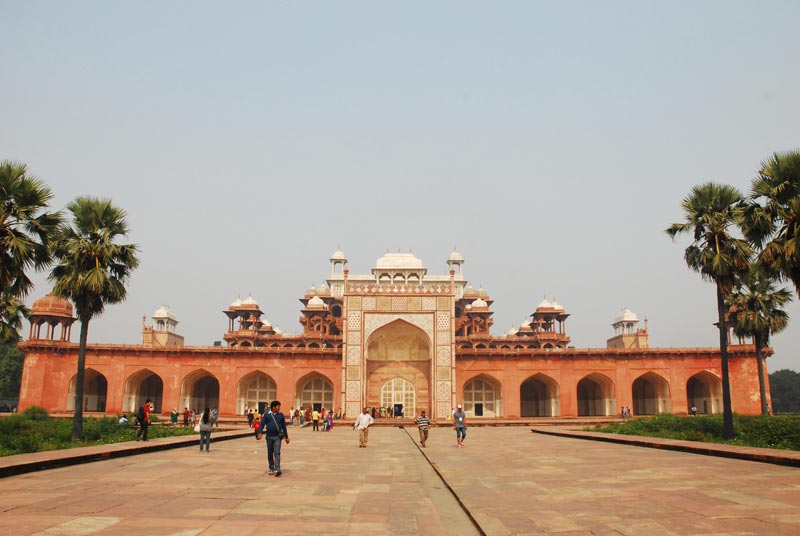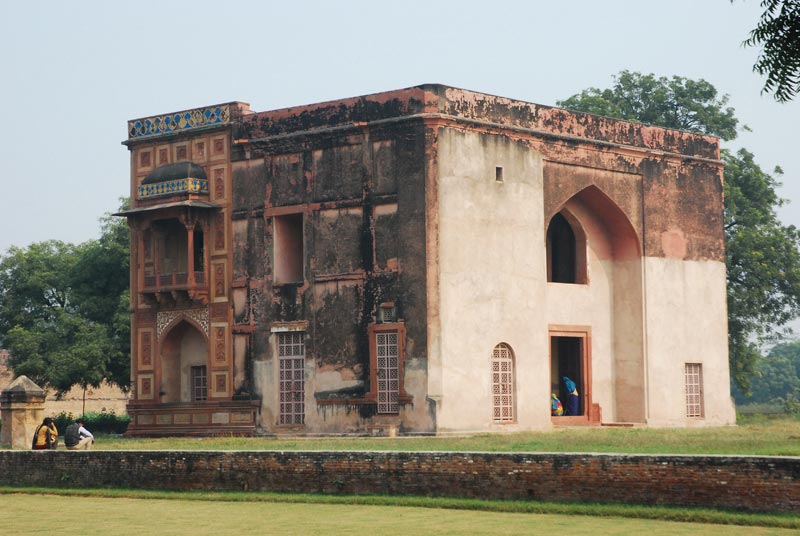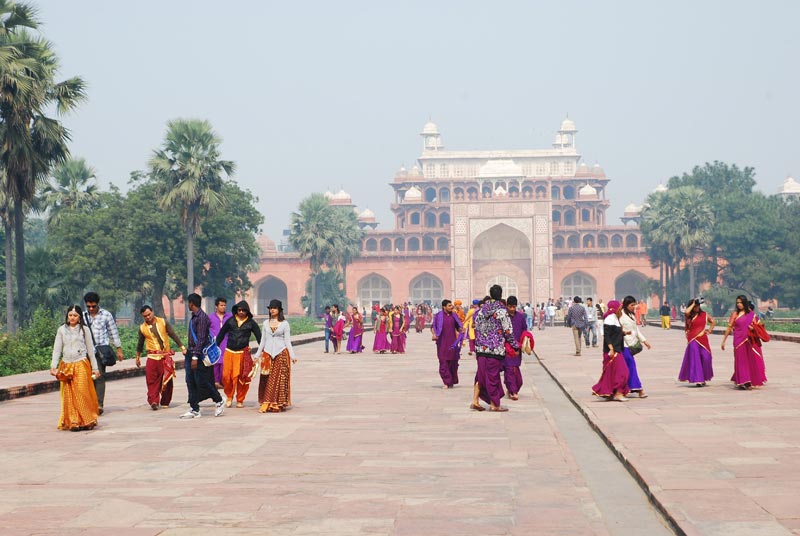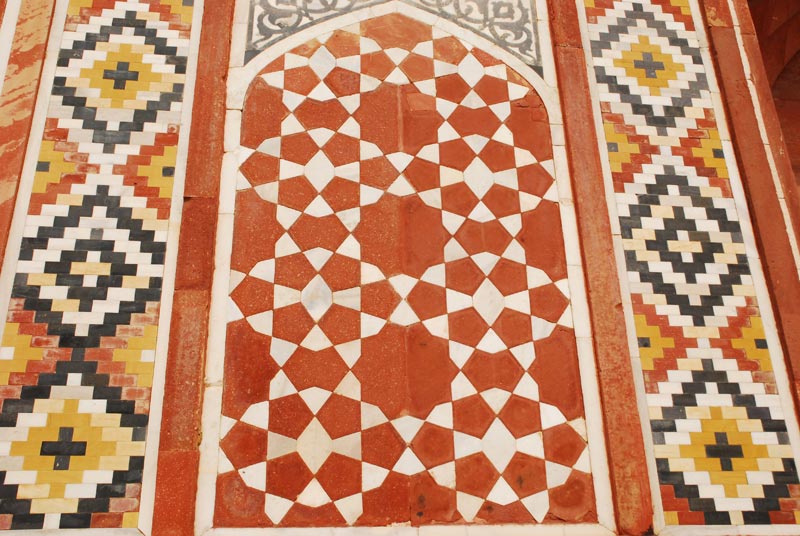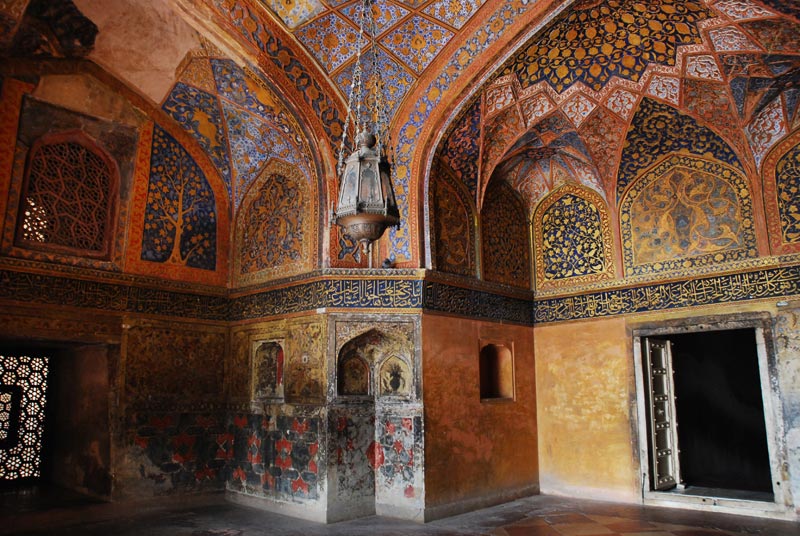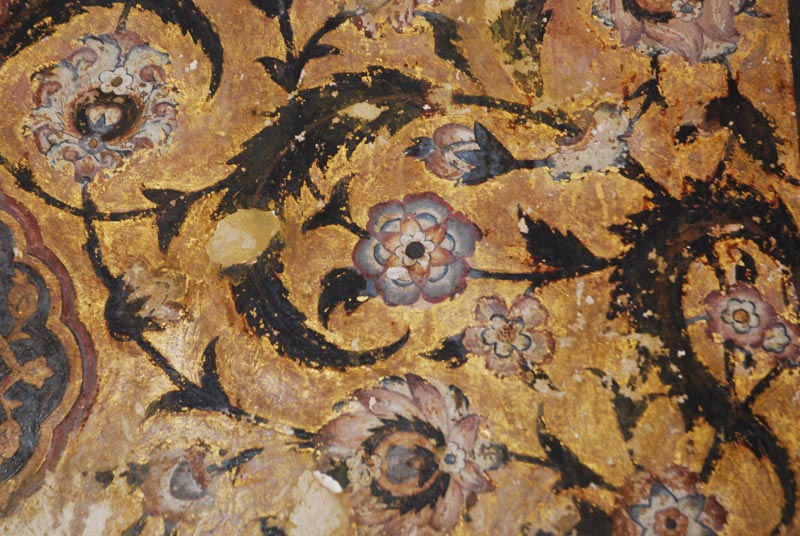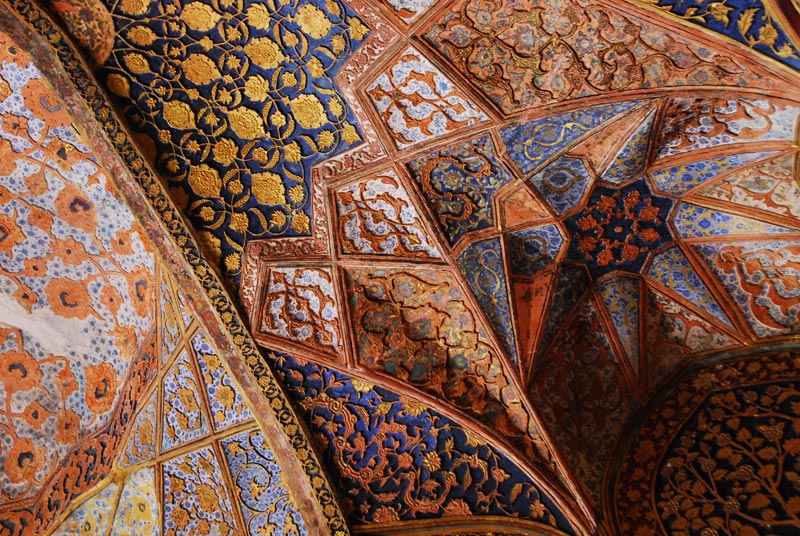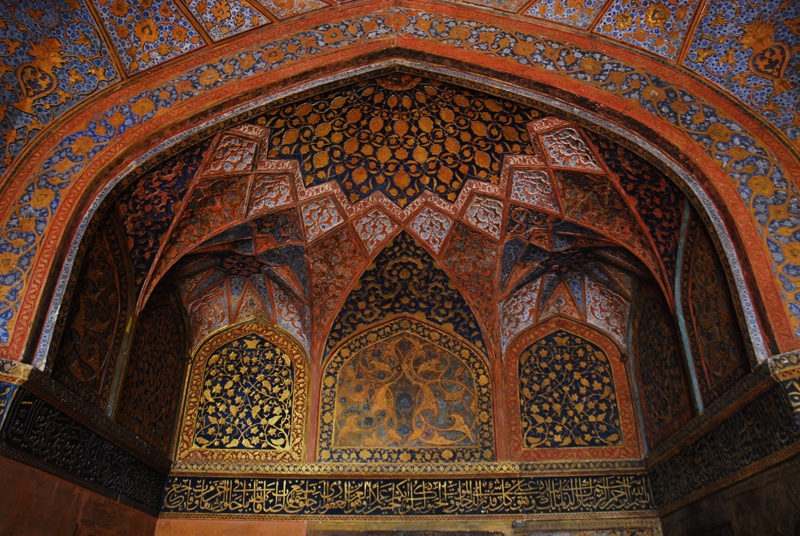About Akbar Tomb
In the suburbs of Agra on the Mathura road, about 8 km away from the city center at a place called Sikandra lies the tomb of the third Mughal emperor Akbar. The remains of the great emperor rest in the pyramidal mausoleum with five tiers. A false tomb is placed on the top floor, while the real tomb of Akbar lies in the basement.
History and Architecture
Akbar was the Mughal emperor from 1556 till his death in 1605. According to the tradition of Tartary, one could construct his own tomb during his lifetime. This custom was religiously followed by the Mughals. Akbar had chosen a suitable site at Sikandra, an area close to Agra city named after Sikandar Lodhi. His son Jehangir completed the monument after Akbar's death, building the topmost storey using white marble.
The tomb, shaped like a truncated pyramid, is a five-storey building resting on a high stone platform. It is located right in the center of a square piece of land with four causeways extending from it in four directions. The magnificent entrance, the fine patterns, the jali work, all are inspired from Islamic style, while the calligraphy and the layout of the garden famously known as Charbagh speaks of the Persian style. The use of canopies, airy pavilions in tiers, and the absence of a dome show influence of the local architecture.
The actual cenotaph is laid in the basement in a simple chamber paved with stone, where a vestibule decorated with floresque, arabesque and calligraphic designs leads to the Akbar's tomb. The portico in front of the cenotaph is covered with beautiful stucco paintings. The place also entombs graves of Aram Banu and Shukru-n-Nisa (daughters of Akbar), Zebu-n-Nisa (daughter of Aurangzeb) and Sulaiman Shikoh (son of Shah Alam) in different chambers.
Timings
Akbar Tomb is open from sunrise to sunset. The best time to visit this place of peace and serenity is during the winters.
- Rs. 5.00 per head for:
- Indian citizens
- Citizens of SAARC countries (Maldives, Sri Lanka, Pakistan, Nepal, Afghanistan Bangladesh and Bhutan)
- Citizens of BIMSTEC countries (Sri Lanka, Nepal, Bhutan, Bangladesh, Thailand and Myanmar)
Others:
- US$ 2 or Rs. 100 per head.
- Free entry on Fridays.
- Free entry for children up to 15 years.
Location and how to reach
Located at Sikandra, in the suburbs of Agra on the Mathura road, Akbar Tomb is about 8 km away from the city center. The city of Agra can be approached by road, rail or air. The nearest airport is about 7 km from the city. The main railway station is Agra Cantonment. From Agra, Sikandra can be reached by road.
Last Updated on December 05, 2025

